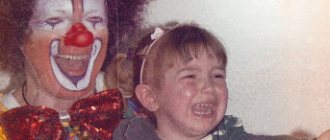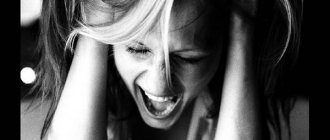Why does a person faint and what is this condition? The brain cannot function normally without a constant flow of blood and nutrients. A sudden disruption of this process causes severe oxygen starvation of brain tissue. The result is a short-term loss of consciousness - usually it lasts a few seconds. The repetition of these cases indicates cardiac and neurological problems in the body, and the causes of fainting are varied. There is no need to delay their diagnosis. Not only fainting, but also pre-fainting conditions should alert you and lead you to a qualified specialist. Now you can undergo a consultation and a set of preparatory examinations when registering for a course of enhanced external counterpulsation or shock wave therapy of the heart absolutely free of charge!
Promotion
Just until the end of autumn, undergo a free consultation and a set of preparatory examinations* when registering for a course of enhanced external counterpulsation or shock wave therapy of the heart.**
Send a request
* Check the details of the Promotion by phone. **Has contraindications; consultation with a doctor is required.
Enhanced external counterpulsation (EECP) Cardiac shock wave therapy (SWTS)
Hurry up to apply, the promotion period is limited.
Symptoms of loss of consciousness
Fainting and loss of consciousness - what's the difference? There is no difference, since fainting is a loss of consciousness for a short time (usually up to 1 minute). The main precursor can be called a pre-fainting state. And speaking about the symptoms of loss of consciousness, most often they mean the symptoms of a pre-fainting state:
- a feeling of lightheadedness and nausea sets in;
- the heart begins to beat quickly;
- circles and “spots” appear before the eyes;
- vision loses clarity;
- a strong pounding appears in the temples;
- cold sweat is produced profusely;
- there is a feeling of imminent fall.
It is at this moment that emergency measures must be taken to prevent loss of consciousness. Timely provision of first aid is also extremely important.
However, fainting can occur quite suddenly, without this “warning”. Its symptoms cannot go unnoticed by others:
- a person suddenly loses his balance and falls in a “sheaf”;
- loss of consciousness occurs;
- the skin becomes pale;
- Limbs may twitch and urine may leak involuntarily.
Having regained consciousness, the person feels overwhelmed and experiences severe drowsiness.
Main pathologies
Syncope is caused by insufficient supply of ozone to the brain, which is usually caused by the presence of disturbances in the functioning of the body.
Vagal loss of consciousness
Most often they develop with spasms that narrow the nutrient vessels or with a decrease in pressure, and does not depend on severe pathologies of an organic nature. Some of the least dangerous causes of syncope include the following:
- stress (painful sensations or their expectations, the appearance of blood, an uncontrollable state of fear up to panic attacks, nervous overstrain);
- reflexes: coughing, sneezing, pain during urine excretion, penetration of a foreign object into the throat, problems with bowel movements, serious exercise;
- vegetative-vascular pathologies that develop during panic attacks.
After this condition, all functions are fully restored, but severe fatigue and panic attacks may be present.
Cardiogenic causes
The main factor causing syncope in 25% of cases is heart disease. After loss of consciousness occurs, it is immediately necessary to undergo a thorough diagnosis, since if this is not done, then a serious illness can be overlooked.
Most often, the factor that provokes insufficient oxygen supply to the brain and the formation of syncope in diseases of a cardiogenic nature is a decrease in the number of blood during cardiac output (blood pushed into the aorta during one contraction). As a rule, syncope is formed due to serious illnesses caused by disturbances in the heart rhythm (arrhythmia or tachycardia is detected, in which the heart rate is more than 160 beats per minute).
Loss of consciousness of arrhythmic type
This kind of syncope is caused by the presence of the following pathologies:
- Paroxysmal tachycardia is a sharp increase in the number of myocardial contractions per minute (more than 150).
- Ari – characterized by a high probability of cardiac arrest. It is quite difficult to identify such a pathology, since by the time the cardiogram is performed, the paroxysm has already disappeared, and such a false diagnosis as physiological fainting can be made. This does not reduce the likelihood of death.
- Weakening of the sinus node (poor functioning of the central node that controls the rhythm of the heart).
- Atrial fibrillation and gastric fibrillation.
- SVC syndrome is characterized by a pathological path of impulse conduction in the myocardium.
With this kind of disease, rhythm problems arise and the saturation of brain cells with blood is interrupted.
Other reasons
Other causes of insufficient cardiac output include the following:
- problems with the functioning of the ventricles;
- a heart attack that provoked problems with muscle contraction;
- congenital or acquired defects of the heart structure;
- vascular thrombosis;
- atherosclerosis.
With prolonged weak functioning of the coronary vessels, ischemia is formed (cell death occurs). Atrophy of the active fibers of the heart is observed; they are replaced by connective tissue, which is characterized by increased density and is unable to contract. There is a decrease in the output volume, the brain cells do not have enough oxygen, which causes a loss of syncope.
Causes of fainting
There are many reasons why people faint, and almost all of them are associated with a sharp decrease in the intensity of blood flow in the brain. Among the most common causes of loss of consciousness are disorders of the nervous system (50% of all cases) and heart pathologies (25%). Also, immediately before unconsciousness may:
- vascular function is impaired due to a pre-stroke condition, atherosclerosis;
- increased pressure in the vessels of the skull due to hydrocephalus, tumor, hemorrhage;
- the amount of sugar and oxygen in the body decreases, which occurs with kidney pathologies, hypoglycemia, anemia;
- decreased circulating blood volume due to bleeding.
Treatment with folk remedies
The use of some folk remedies can help reduce the incidence of syncope. However, these methods are not methods of treating the causes of loss of consciousness, but only auxiliary methods to improve the condition.
- Gentian decoction. To prepare a decoction of this herb, you need to take 2 tsp. crushed raw materials and pour 1 tbsp. boiling water Drink half a glass before each meal.
- Burdock compresses. A fresh burdock leaf should be mashed and placed on the solar plexus. The compress helps you come to your senses after fainting.
- Soothing tea. It helps if a person loses consciousness due to dysfunction of the nervous system. To prepare it, you can take mint, lemon balm, St. John's wort, linden in equal proportions, mix the crushed raw materials, and 2 tbsp. l. pour 2 cups boiling water. After 20 minutes, strain and drink 2 times a day, 1 glass.
- Wormwood oil. Grind 25 g of wormwood seeds in a coffee grinder and pour in 100 g of olive oil. After a day, pour into a dark glass jar and store the product in the refrigerator. Take 2 drops 2 times a day (drop onto sugar).
- Infusion of mountain arnica. 3 tbsp. l. Pour dried arnica flowers into a thermos and pour 200 g of boiling water. After an hour, strain and drink with milk 4 times a day, adding 1 tbsp to 100 g of milk. l. infusion.
- Means for normalizing blood circulation. If loss of consciousness does occur, then after this the person should be given a glass of warm tea or chamomile decoction. Coffee or 1 tbsp will also work. l. cognac to normalize blood circulation.
- Massage of special points. In case of fainting, a massage of the points above the upper lip and under the lower lip will help revive the patient. You need to press hard on them, as sharp pain helps improve blood circulation in the brain. You can also rub the skin in the stomach area for this purpose.
- Cold water. It is sprayed on someone who has lost consciousness. This is especially important if the syncope is caused by overheating. It is recommended to cool the extremities. Also, a person who has come to his senses should drink some cold water in small sips.
Causes of frequent fainting
The causes of frequent fainting are classified into a separate group. They are usually associated with various mental disorders that manifest themselves periodically, for example, hysterical neurosis. A sudden disruption in blood flow can occur with epilepsy. Often first aid for fainting is necessary for people with low blood pressure and diabetes. A drop in vascular tone can cause fatigue, neurosis, and even a simple transition from a sitting state to a standing state and vice versa.
There are also specific causes in women and men that lead to short-term loss of consciousness.
What will the doctor do?
The doctor must understand what is the cause of fainting and whether there is a threat to life and health. To do this, he will ask about the episode itself, about the medical history, about the illnesses of relatives (especially about early heart problems), conduct an examination and do an electrocardiogram. It is very important to tell your doctor everything you felt before and after you fainted, as additional symptoms can be very helpful in making a diagnosis. For example, chest pain in some cases indicates acute coronary syndrome (myocardial infarction or unstable angina) or pulmonary embolism. Rapid heartbeat is often a sign of arrhythmia. Shortness of breath may be a manifestation of heart failure or pulmonary embolism. Headache in some cases indicates vascular disorders and hemorrhages.
Often, the patient, among other things, has a stool test for occult blood (this checks for bleeding in the gastrointestinal tract), a blood test to determine whether there is anemia, and a blood test for brain natriuretic peptide (this can indicate problems with heart). The woman will most likely be given a pregnancy test. The doctor can see how much your blood pressure and pulse change when you change your body position.
If the doctor believes that it is likely that carotid syncope has occurred, carotid sinus massage will be required to confirm the diagnosis.
If subarachnoid hemorrhage is suspected, a CT scan of the brain and a lumbar puncture may be needed.
If the doctor suspects that the problem is epilepsy, he will prescribe an electroencephalography.
If you suspect heart problems, your doctor may admit you for observation in the hospital, send you for an ECG and echocardiography, perform Holter monitoring (24-hour ECG recording), electrophysiological study of the heart, or coronary angiography. In difficult cases, an implantable (subcutaneous) loop ECG recorder may be installed for several months.
A high risk of severe consequences is indicated by:
- ECG abnormalities;
- structural changes in the heart;
- symptoms indicating heart failure (shortness of breath, weakness, fatigue, swelling, etc.);
- low blood pressure (systolic - “upper” - below 90 mm Hg);
- shortness of breath before or after fainting, or at the time of treatment;
- blood hematocrit is less than 30%;
- old age and the presence of concomitant diseases;
- sudden deaths in the family due to heart problems.
First aid for fainting:
- position the patient in such a way as to improve blood supply to the head - raise your legs and try to lower your head a little lower than your body;
- loosen the patient's collar, open the window in the room for air access;
- Sprinkle water on your face, apply ammonia to your nostrils;
- the patient has come to his senses - offer him something sweet;
- If possible, give an intravenous injection of glucose - this will improve blood circulation.
If help for loss of consciousness is provided in a timely manner, the person will feel better within a few minutes.
How to recover after fainting?
- Help the person relax after he has regained consciousness. Unfasten any constricting clothing (such as a tie, collar, or belt) he is wearing.
- Make sure the person lies on the ground and rests for 15-20 minutes. It will take this time for blood to flow back into the brain.
- Give the person room to breathe and provide fresh air. If fainting occurs in a public place and a crowd has gathered around, ask people to move away.
- Give the person water and/or food while they are conscious. This will help him recover faster. Dehydration, hunger, and hypoglycemia are common causes of fainting.
- Do not allow the person to rise suddenly. A sudden rise can trigger another fainting spell. A person should sit or lie down for some time, and only then get to his feet.
Types of fainting
In medicine, there are three main types of fainting.
With neurogenic, there is a temporary disorder of cardiovascular reflexes that control the dynamics of blood in the body. This type is varied:
- vasodepressor – consequences of excessively strong emotions, stress, fear, they occur most often;
- orthostatic are caused by a sharp transfer of the body from a lying position to an upright one;
- fainting due to tight collars is explained by too high sensitivity of the carotid sinus;
- loss of consciousness in older men when urinating at night, coughing, defecating - a consequence of a sharp increase in intrathoracic pressure.
If a patient has disturbances in heart rhythm, problems with the conduction of cardiac tissue are observed, and myocardial infarction is diagnosed, then they speak of cardiogenic loss of consciousness.
If, due to sudden fear, panic, or anxiety, a person’s breathing unconsciously quickens and deepens, causing loss of consciousness, such fainting is classified as hyperventilation .
In addition, there are classifications that distinguish:
- maladaptive form - when fainting is caused by adaptation to external conditions (a person overheats, etc.);
- anemic – when the volume of hemoglobin and red blood cells drops sharply, and what remains is not enough to fully supply the brain with oxygen;
- hypoglycemic – when glucose levels in the body drop;
- extreme forms – when the body is exposed to extreme conditions: high mountain air, burns, intoxication with harmful substances, medications.
Grodno Regional Children's Clinical Hospital
Details Published October 12, 2016
Neurologist KFD Glybokaya O.L.
First aid for loss of consciousness, fainting
According to statistics, about 20% of healthy people lost consciousness at least once in their lives, and a much larger number experienced a “presyncope.”
We talked about what syncope is, as well as the causes and types of fainting in a previous article. But let us remember that fainting is an attack of short-term loss That is, a person lies motionless, does not respond to questions and does not perceive what is happening.
Typically, a person’s loss of consciousness can occur due to:
- a significant lack of oxygen directly in the human blood (or with an acute lack of blood itself, which carries the necessary oxygen).
- with a concussion (namely, with a strong impact of a person’s brain on his own skull).
- with quite severe pain or with severe nervous shock of a person.
In addition, short-term loss of consciousness can often be caused by factors such as:
- Severe fatigue.
- Excessive hypothermia.
- Excessive overheating.
- Acute lack of oxygen in the inhaled air.
- Severe pain syndrome.
- Quite a deep emotional experience, and even a positive one.
- A condition of dehydration, possibly resulting from severe diarrhea and vomiting.
- Various head injuries, hemorrhage, electric shock, etc.
It must be said that for those people who have been suffering for a long time from a wide variety of nervous disorders, neuroses or numerous phobias, fainting with loss of consciousness can occur even from the slightest sight of the element that causes the phobia (say, at the sight of blood or a needle, or other object on which spreads the phobia).
In some cases, a person may lose consciousness even due to unusual physical efforts. For example, after sudden lifting of excessive weights, after running too fast, as well as during other activities in which effort is exerted.
Fainting or near-fainting conditions are also common in people who are heavy smokers (and especially in female smokers) - which usually occurs after bouts of too strong coughing.
But, let’s say, in people suffering from instability of blood pressure, such fainting states can develop when the body moves quite quickly from its horizontal (lying) position to a strictly vertical position.
Such patients are advised to get out of bed in the morning quite slowly and carefully. In addition, fainting can occur when the head is thrown back too sharply and too quickly (this can happen in a hairdresser’s or dentist’s chair).
Most young ladies who are on strict diets that are not calculated by a specialist for a particular body run the risk of becoming victims of the so-called hungry fainting. As well as pensioners, children or teenagers who, for one reason or another, do not eat well.
Typically, loss of consciousness does not occur suddenly. Most often, the human body shows the first signs in the form of dizziness, nausea, ringing in the ears, severe weakness, blurred vision, cold sweat, as well as a feeling of emptiness in the head and numbness of the limbs. The person begins to turn pale, his pulse weakens, and his blood pressure decreases. After which the eyes close, muscle tone disappears and the person falls.
How to behave if you lose consciousness?
If you feel unwell, there are signs of fainting (and this includes severe weakness, nausea, severe dizziness, possibly ringing in the ears and even darkening of the eyes), it is very important to find a place to lie down.
It is important to understand that, as a rule, only those people who are walking, standing or sitting at the time of fainting can lose consciousness; in most cases, such fainting does not occur with those people who are already lying down.
However, if in a particular situation it is not possible to immediately take a full horizontal position, you can try going to the wall and simply leaning against it.
In this case, you need to try to cross your legs and periodically strain the muscles of your thighs and even buttocks as much as possible. Such mechanisms will increase the flow of circulating blood and possibly help prevent accidental loss of consciousness.
What to do if you lose consciousness?
But what should you do if you observe from the outside that someone is feeling ill?
So, if you notice that a person is about to lose consciousness, you need to:
- try to prevent such a person from falling and hitting his head on the floor or other object
- it is important to try to notice and eliminate the factor that led to the onset of loss of consciousness (of course, if this factor is still in effect). For example, we are talking about taking a person out of an excessively smoky or stuffy room, you can simply open the window.
If loss of consciousness is caused by an electric shock, it is important to remove the live wire from the person, which is necessarily done by making a foreign object a non-conductor of the current.
- When a person does lose consciousness, you need to put him directly on the floor if there is no bed or table nearby. To ensure adequate access to oxygen, it is extremely important to clear the airways: unfasten the collar, loosen the belt, scarf, etc. Do not place anything under the head of an unconscious person. It will be better if you lift the person's legs up a little. This will facilitate proper blood flow directly to the brain.
- You should try to bring an unconscious person back to consciousness with the help of elementary external stimuli - say, by patting the person on the cheeks, using splashes of cold water or the same ammonia. If suddenly you don’t have ammonia at hand, you can bring a cotton wool pre-moistened with ordinary vinegar to the unconscious person.
- If a person still does not come to his senses after taking such measures, you need to check his breathing and pulse. As a rule, breathing is checked using a mirror, and the presence of a pulse is checked using two fingers applied to the neck (directly on the carotid artery).
- In cases where a person has neither breathing nor a pulse, it is necessary to perform artificial respiration (in the absence of foreign objects in the respiratory tract) together with chest compressions.
- When the person still has breathing and a pulse, you need to turn the victim on his side. This position was not chosen by chance. It is on the side that if severe vomiting begins, an unconscious person will not choke.
- Next, be sure to call an ambulance, even if your efforts were successful and the person came to his senses.
It often happens that immediately after regaining consciousness, a person begins to feel embarrassed because so much attention is being paid to him and refuses further medical help.
In this case, outsiders should still insist on receiving such help, or at least ensure that the person, after losing consciousness, is not left without personal accompaniment for the near future. This is very important, since there are many diseases or conditions when fainting can recur even several times.
Diseases that cause fainting
Patients with arrhythmia may experience fainting because the blood supply to the brain is sharply reduced. With bradycardia, symptoms of loss of consciousness are also observed. The reasons are a sharp, almost instantaneous drop in heart rate to 30 or even 20 beats per second when the norm is 65-72.
- In addition, patients may need help with fainting:
- pulmonary hypertension;
- dehydration;
- Parkinson's disease;
- with aortic stenosis;
- diabetes mellitus
Consequences and complications
The consequences of such a condition depend on the causes of its occurrence. The most serious consequences may be:
- Development of coma and cerebral edema , which leads to disorders of important life functions.
- Suffocation due to retraction of the tongue in an unconscious state.
- Various injuries received during a fall.
With frequent manifestations of this condition, a person sometimes has to change his occupation.
Diagnostics
The initial examination consists of listening to the patient’s complaints about the frequency and duration of fainting states, and determining the conditions under which loss of consciousness occurs. A neurological examination is performed.
The patient must be sent for laboratory blood tests.
Among instrumental studies, the most effective are:
- various types of ECG;
- echocardiography;
- computer sphygmomanometry;
- cardiac rhythmography;
- 24-hour blood pressure monitoring;
- duplex scanning of blood vessels.
These are the most modern diagnostic methods that identify the objective cause of fainting and allow you to prescribe optimal treatment.
Diet
Diet for the nervous system
- Efficacy: therapeutic effect after 2 months
- Timing: constantly
- Cost of food: 1700-1800 rubles per week
Nutrition for people prone to fainting should be complete and varied. To choose the right diet, first of all, you need to find out the cause of such manifestations. The diet is formed depending on the presence or absence of heart disease, vascular disease, diabetes mellitus , etc. The basic nutritional rules should be as follows:
- The menu should be dominated by fresh and properly processed products.
- The diet should be varied to provide the body with essential microelements and vitamins .
- It is better to eat food 5-6 times a day in small portions to prevent the feeling of extreme hunger.
- If the state of the body allows, you need to introduce as many vegetables and fruits into your diet as possible.
- Proper drinking regime is necessary, because dehydration can also cause fainting.
If a person experiences reflex fainting, he should adhere to the principles of a diet for the nervous system .
Prevention
Knowing what to do if you faint, you also need to take preventive measures:
- eat rationally (it is better to consult your doctor about your individual diet);
- Moderate physical activity must be present;
- walk at least 2 hours a day;
- Women during pregnancy should regularly visit a gynecologist;
- eliminate extreme loads and overheating;
- Among medications, the doctor may prescribe nootropics, venotonics, adaptogens, and vitamins.
Forecast
According to medical statistics, in approximately 93% of cases, benign fainting occurs with a favorable prognosis, which does not require drug treatment.
An unfavorable prognosis is observed in those patients in whom fainting is provoked by cardiovascular disease . These people are at risk of death due to heart problems. Risk factors for sudden death in patients with syncope are as follows:
- Age over 45 years.
- Ventricular arrhythmias.
- Heart failure.
- The presence of pathological changes on the ECG, which indicate arrhythmogenic disorders.
- Myocardial infarction.
- Hypertrophic cardiomyopathy.
- Arrhythmogenic right ventricular cardiomyopathy.
Diagnostics and treatment at the Center for Pathology of the Circulatory Organs
At the CBCP clinic you have modern European diagnostic equipment, advanced research methods and highly qualified doctors at your service.
Even if you have experienced a fainting state once, this is already a reason to see a doctor. And repeated fainting is a mandatory reason to visit a cardiologist and conduct professional diagnostics. Timely detection of cardiac pathology is far from a death sentence. The CBCP cardiology clinic will select an individual treatment program, and your body will return to tone.
List of sources
- Bova A.A. Syncope in clinical practice: educational method. allowance. – Mn.: Asobny, 2009. – 45 p.
- Autonomic disorders: Clinic, treatment, diagnosis / ed. AM Wayne. – M., 1998. – 752 p.
- Guseva I.A., Bondareva Z.G., Miller O.N. Causes of syncope in young people // Ros. cardiology journal. - 2003. - No. 3. — P. 25-28.
- Stykan O.A. Akimova G.A. Differential diagnosis of nervous diseases: a guide for doctors. - St. Petersburg: Hippocrates, 2000. - P. 132-177.
Is it possible to raise blood pressure on your own at home?
– At home, in order to raise blood pressure, you can drink tea or coffee, eat something salty, and quickly drink 1-2 glasses of cold water (with ice in large sips).
You can also use so-called physical counterpressure maneuvers: crossing your legs in combination with maximum tension in the muscles of the legs, abdomen and buttocks; maximum squeezing of the rubber ball in the hand; squeezing one hand with the other with gradual abduction of the hands (phalanxes of the fingers in a lock in front of the chest).
All this is done with effort, muscle tension for as long as possible, until the symptoms disappear completely.









